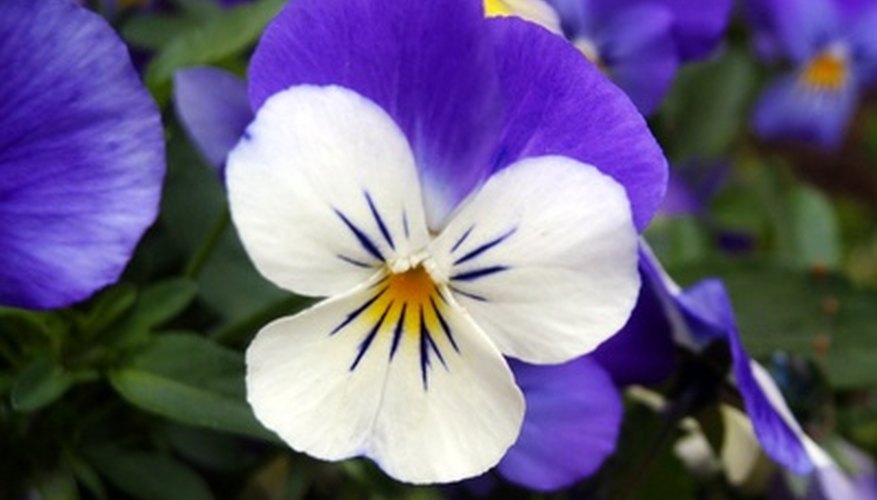Viola is a prolific genus with over 500 species of annuals and perennials found all over the world. The small clump-forming plants have similar, five-petalled flowers, with the lower petal often having dark markings. Their dark green leaves are lobed, heart shaped or round. They grow best in moist sites, whether shady or sunny. To keep the plants looking fresh and from going to seed, pull off the dead flowers as they appear.
Viola Tricolor
Affectionately known as johnny jump-up, this plant self-seeds profusely all over the garden. Its tiny, 1/2 inch-flowers pop up from the centre of established perennials, earning it a reputation as a garden pest. Weed these plants out as soon as the flowers fade so they don't take over your garden. Be sure to pull off the seed heads before composting them since most seeds are not killed in backyard composters.
- Affectionately known as johnny jump-up, this plant self-seeds profusely all over the garden.
- Weed these plants out as soon as the flowers fade so they don't take over your garden.
Viola Odorata
V. odorata, sweet violet, is native to southern and western Europe. It has heart-shaped, dark green leaves with masses of deliciously fragrant, 1-inch flowers. V. cucullata, marsh violet, a North American native with a slight fragrance, is often incorrectly labelled as V. odorata. Sweet violets are perennials that spread by runners as well as by self-seeding.
- V. odorata, sweet violet, is native to southern and western Europe.
- Sweet violets are perennials that spread by runners as well as by self-seeding.
Hybrids
Hybrids developed from V. cornuta, V. tricolour and V. corsica, sometimes labelled as winter pansies, are the most common form grown in gardens, They should be treated as short-lived perennials. Their flowers are small or giant-sized, up to 3 inches wide, and come in many colours and combinations. They form tidy, slowly spreading clumps of dark green, lobed, oblong-shaped leaves.
Propagating Violas by Division
According to the Fine Gardening website, some species can be divided. Divide hybrid violas in early spring or late summer. Division of the newer hybrids ensures you get new plants that look exactly like their parents. V. odorata is easily divided by snipping the runners between plantlets and moving them somewhere else. Since V. tricolour can be an annual, biennial or perennial, some gardeners think it is not worth the bother to divide it.
- According to the Fine Gardening website, some species can be divided.
- Since V. tricolour can be an annual, biennial or perennial, some gardeners think it is not worth the bother to divide it.
Propagating Violas by Seed
All violas are easily grown from seed. Start seed plants of known cultivars in early spring to be sure of what you are getting. Allowing the newer hybrids to self-seed or collecting their seeds results in plants that do not look like their parents, but if you are not fussy and already have several violet species growing in your garden, you won't notice the difference. Relying on the viola's inherent ability to self-seed is the easiest way to get more plants.
- All violas are easily grown from seed.
- Start seed plants of known cultivars in early spring to be sure of what you are getting.
